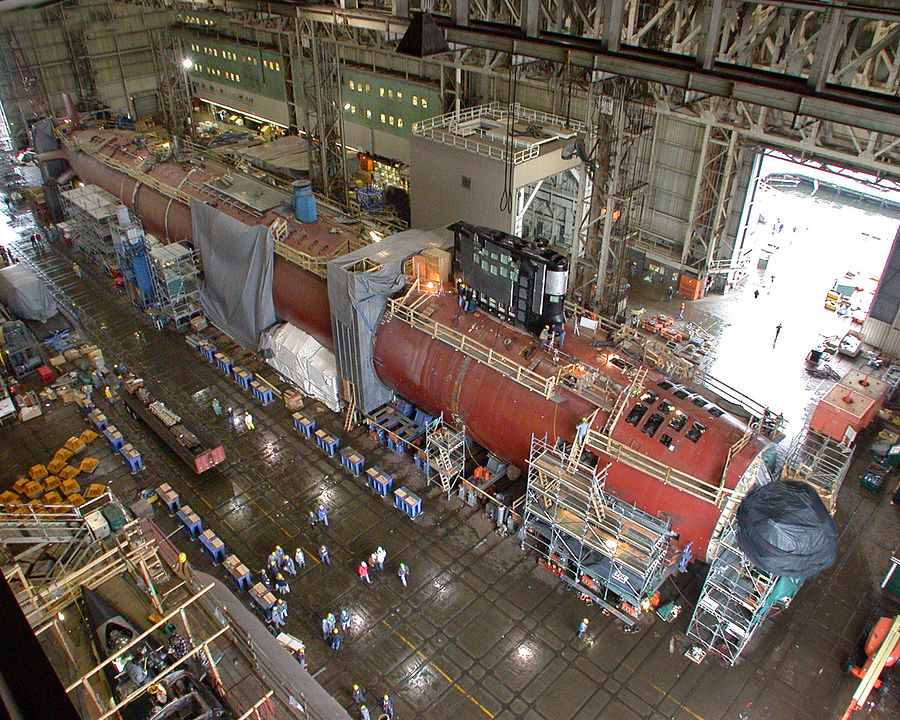
In a dynamic response to the Virginia-class submarine delays, U.S. Navy SEALs are taking strategic measures to sustain their underwater capabilities, according to military officials at the Special Operations Forces conference in Tampa, Florida.

The SEALs have traditionally depended on dry deck shelters attached to Ohio-class submarines for covert operations, a system in use for nearly decades.

These shelters allow SEALs to deploy underwater undetected, but as the Ohio-class subs retire and Virginia-class subs face production setbacks, the SEALs are compelled to adapt.

Navy Capt. Burt Canfield, who oversees dry deck shelter acquisitions for Special Operations Command (SOCOM), highlighted that while the Dry Deck Shelter Next program is in the research and development phase, it aims to introduce automation and remote operations to reduce the required crew from ten sailors down to six or fewer.

This innovation reflects SOCOM’s aspiration to enhance safety and increase operational capacity.

The Virginia-class submarines, intended to support the SEALs with the deployment of dry deck shelters, have encountered significant delays.

Block IV of the Virginia class is three years behind schedule, while the Block V boats — which feature the new Virginia Payload Module that “reconstitutes the ability to host dry deck shelters,” according to the Navy — are two years behind schedule, an internal Navy review of its shipbuilding programs stated.

Despite these setbacks, Navy Capt. Jared Wyrick, SOCOM program executive officer for maritime systems, said, “We’re finding ways that we’re going to still get those missions done even if we don’t have that submarine underneath us to support us.”

“If Naval Special Warfare already has a model of being a low observable, special mission set, let’s utilize that concept to say, how do I … get that same access using different portfolios, such as” surface combatant craft, he said. The command has “invested a lot of energy and money and manpower” into making its surface vessels the “most low observable platform out there. That can give us … good access,” albeit “not as deep as a submarine can get.”

Advances in individual jet propulsion systems have enhanced SEALs’ capabilities to travel extended distances underwater, now up to 60 miles, and remain submerged for 24 hours.

The SEALs’ adaptation to these challenges also involves partnering with allies.

Wyrick mentioned that the United States is engaging with countries such as the United Kingdom and Norway to explore collaborative approaches to undersea mobility gaps. These partnerships provide mutual benefits, including cost savings and reduced mission threats.

One significant advancement is the full operational capability of SOCOM’s dry combat submersible in fiscal 2024. This Lockheed Martin-built, 39-foot long submarine can carry eight SEALs and has increased the team’s operational range, providing them with an alternative means of underwater transportation in the absence of the traditional dry deck shelters on submarines.

The Navy’s innovative strategies and international collaborations ensure that the SEALs can maintain their edge in maritime special operations, even as they wait for the delivery of the delayed Virginia-class submarines.

Their ability to adapt and overcome technological and logistical obstacles underscores the military’s commitment to retaining a superior capability in undersea warfare.
Relevant articles:
– Submarine delays push SEALs to find new underwater approaches, Defense News
– Class Sub Delays Force SOCOM to Get Creative for Maritime Missions, National Defense Magazine

